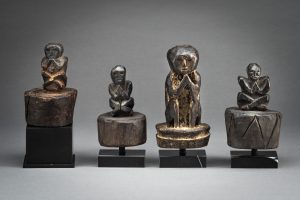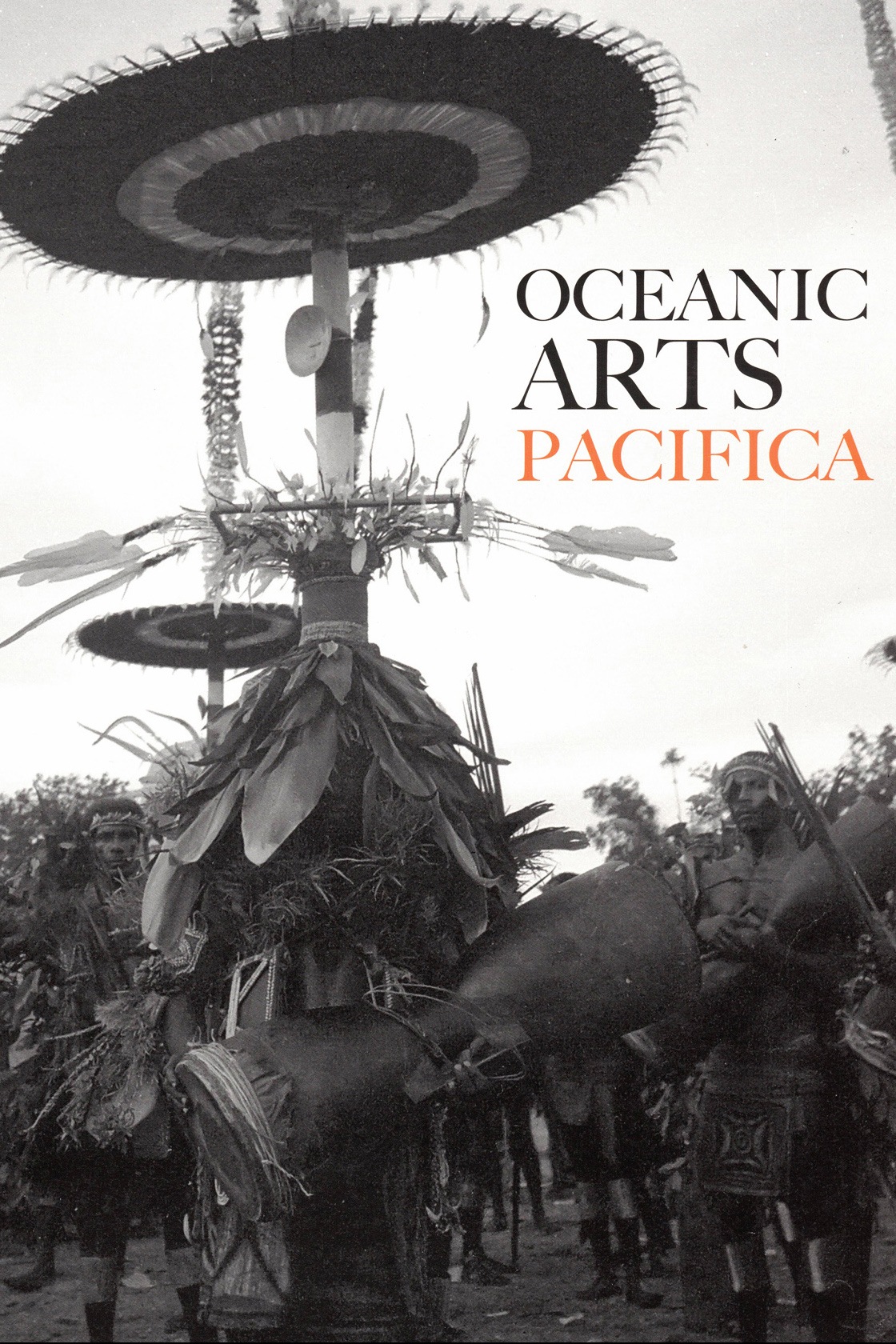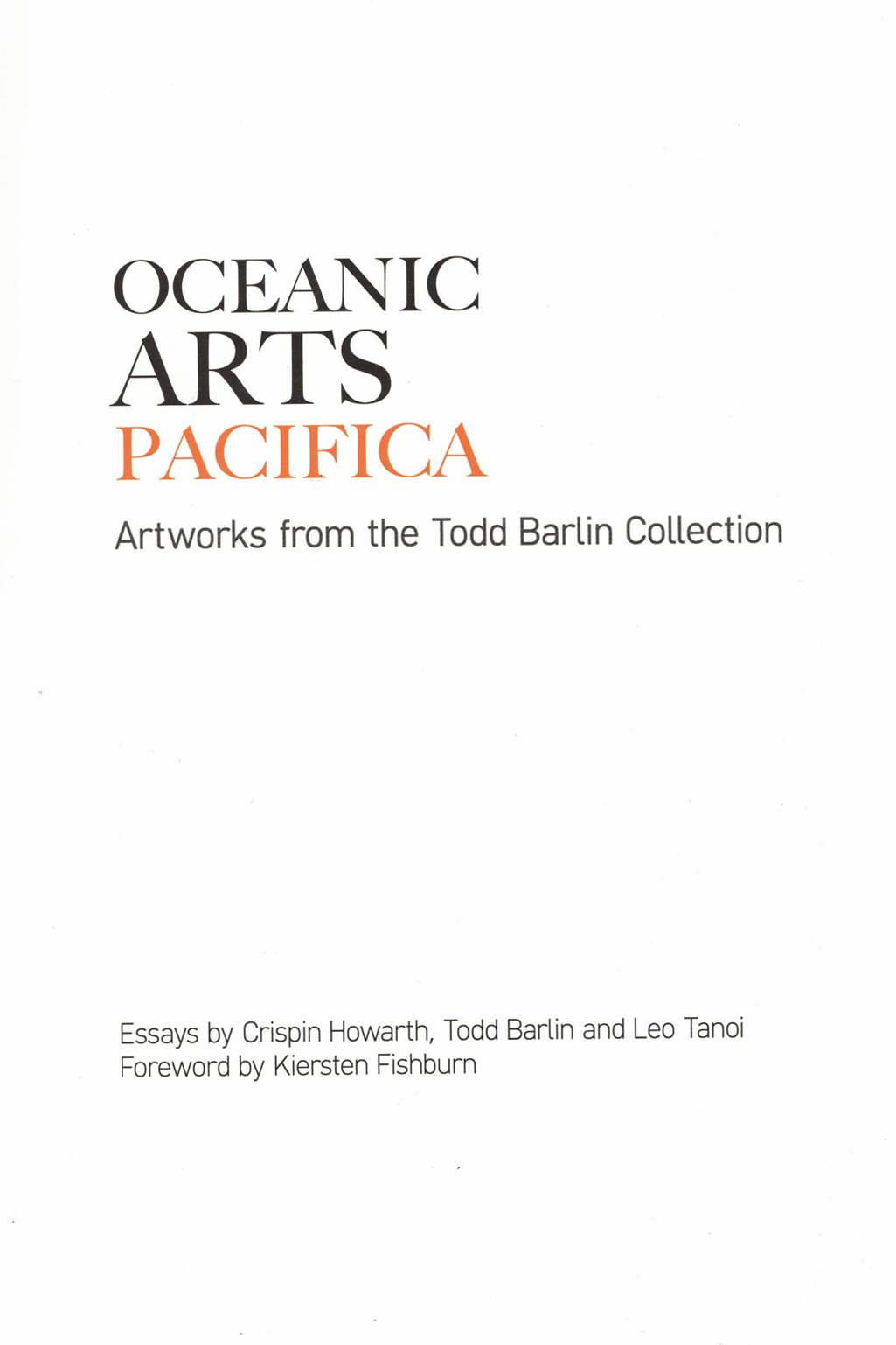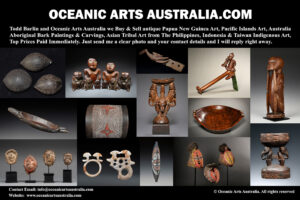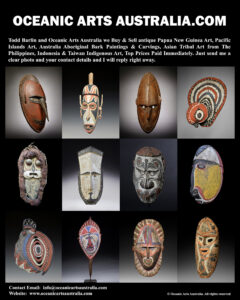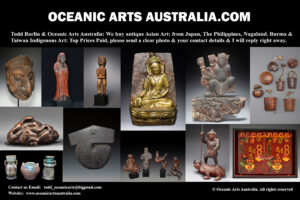Four Fine Old Nepal Milk Jar Lids Western Nepal 19th Century
| Collection No. | SOLD |
|---|---|
| Size | 13-15cm, (Churn Handle 22cm) |
Four Fine Old Nepal Milk Jar Lids Western Nepal 19th Century
These old wood Jar Stoppers from Western Nepal all have carved ancestor figures on the finial. They were used to close the jars holding Ghee or Clarified Butter. The Tribal people that live in the Himalayas make Ghee is a type of clarified butter that originated in ancient India and is commonly used in cuisines, traditional medicine, and religious rituals. Ghee is prepared by simmering butter, which is churned from cream and removing the liquid residue. The texture, colour, and taste of ghee depend on the quality of the butter, source of the milk used in the process and the duration of the boiling. The whole purpose of Ghee was to clarify the butter to keep it from spoiling. In Hindu culture, the cow is sacred, and butter is the only animal fat that Hindus will eat. The cow represents the soul, with its obstinate intellect, and unruly emotions, but it is also gentle and generous. The butter gives a sacred offering, fuel for lamps, and so valuable for food.
The ghurra or churning rod-handle are a tool for churning milk into butter. Besides possessing an important functional side, ghurras give expression to the age-old Hindu creation myth, the Samudra Manthana: the churning of the milk ocean by the gods and demons, which is also a story with the endless struggle between the forces of good and evil.
By using the ghurra the churning process evokes a reality that is inherent to people. In this way, the space-time structure of the mountain people is measured in moments of everlasting holy time (darshan), a ritual action whose initial inner significance was laid down in centuries and centuries ago.
Inspired by their religious convictions and folk customs, Nepalese mountain people have transposed the original mythological churning rope used to rotate and support the churning rod during churning into sublimely beautiful wooden sculptures full of religious meaning. Ghurras also emanate sublime symbolism through their particular schematic design. They consist of geometric elements that abstractly evoke the gods of the Hindu pantheon.
Ghurras, therefore, can be interpreted as a symbolic stimulus for great devotion to God so that in every object or attitude, in every action undertaken, a deep underlying sacred reality is recognized and given expression: Brahman.
The information on this subject relies on the book Divine Support by Paul de Smedt, published by Book Faith India 2000.
Provenance: The Todd Barlin Collection of Oceanic & Asian Art
ENQUIRE HERE
To see many more rare items and the finest masterpieces, please make an appointment with us to visit the gallery.
For all inquiries, please contact us.

